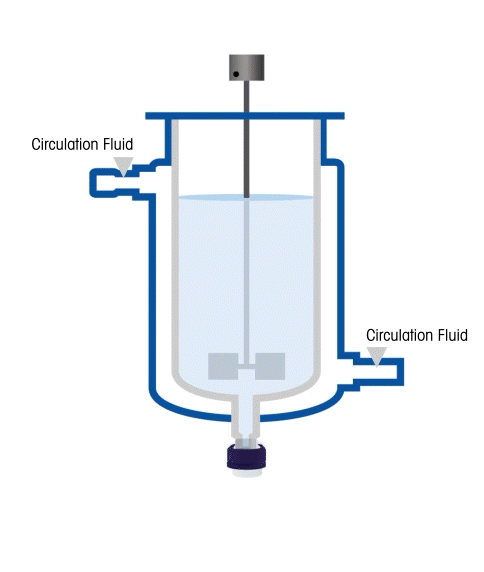What is a jacketed glass reactor?
A jacketed glass reactor comprises a glass vessel encased in a jacket, intended to circulate a heat transfer fluid, such as oil or water, to regulate the temperature of the reactants within the glass container. With its clear glass construction, the reactor facilitates straightforward observation of the reaction while also enabling effortless cleaning, and the capability to withstand extreme temperature and pressure conditions. This type of reactor finds extensive use in laboratory settings, primarily in the chemical, pharmaceutical, and biotechnology industries, where maintaining precise temperature control and visibility of the reaction is critical. Furthermore, the glass material provides superior visual monitoring of chemical reactions, and its chemical inertness makes it suitable for handling aggressive or corrosive compounds.
What are some different types of jacketed reactors?
- Dimpled jacketed reactor: A reactor with a series of small indentations or dimples on the surface of the jacket that increases the surface area and improves heat transfer
- Half-pipe jacketed reactor: Jacket in the shape of a half-pipe, which increases the surface area for heat transfer
- Spiral jacketed reactor: Jacket that is wound around the reactor in a spiral shape, increasing the surface area for heat transfer
- Conventional jacketed reactor: A jacket that surrounds the reactor vessel and is used to transfer heat to or from the reaction mixture
- Limpet Coil reactor: A jacket is formed by winding a pipe around the reactor vessel. This type of jacket provides more uniform heat transfer and is easier to clean than a conventional jacketed reactor
- Combined jacketed reactor: Combination of two or more types of jackets, such as a dimpled jacket and a spiral jacket, used to improve heat transfer
Do you sell jacketed glass reactor vessels or glassware?
Yes, we sell glassware in various sizes. View our full catalog of jacketed glass reactor sets, covers, stirrers, accessories and more! Still can't find what you're looking for? Contact us today and we'll be happy to help.
How do you control the temperature of a jacketed reactor?
Connecting a jacketed reactor to a chemical reactor control system such as RX-10 is the best method to automate and control the temperature, making it an essential tool for process development and scale-up activities. This control system enables users to precisely manage and record real-time data on critical reaction parameters, including temperature, mixing, dosing, and sampling.
How are glass jacketed reactors used in the lab?
Jacketed reactors made of glass are widely used in laboratory settings for a variety of chemical processes. Firstly, a glass jacketed reactor is a vessel that is made up of an outer glass layer and an inner glass layer. The space between the two layers is filled with a heat transfer fluid such as water or oil, which helps to regulate the temperature inside the reactor. One of the primary uses of glass jacketed reactors is for chemical synthesis. The reactor is designed to accommodate a variety of chemical reactions, including those that require high temperatures or pressures. The ability to control the temperature of the reaction is crucial, as many reactions are highly sensitive to temperature changes.
In addition to temperature control, glass jacketed reactors are also used for process monitoring. The transparent nature of the glass allows researchers to observe the reaction as it progresses, enabling them to identify any issues that may arise. Another important use of glass reactors is for scaling up laboratory processes to larger production volumes. By using a jacketed reactor in the laboratory, researchers can gain a better understanding of the process and optimize it for larger production volumes. Glass reactors are also commonly used in the pharmaceutical industry for drug development and production. In this application, the reactor is used to synthesize and purify new drugs, and the temperature control and process monitoring capabilities of the reactor are crucial for ensuring the safety and efficacy of the final product.








